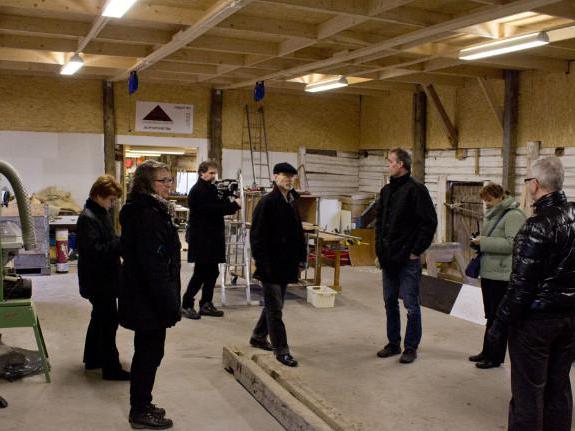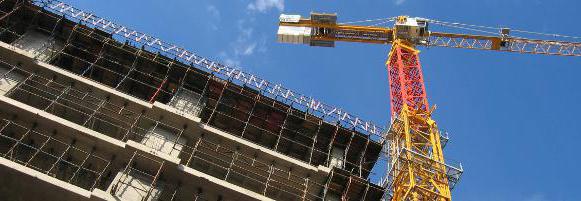Currently, there are quite a lot of companies on the market offering to purchase an immovable object from them by joining a housing construction cooperative (ZhSK). Of course, citizens have a question about the safety and reliability of such a scheme. 
The situation in the Soviet years
First housing cooperatives began to appear in the 1920s. However, already in 1937 they began to be eliminated. The authorities explained this by the fact that such associations were a manifestation of private property. After the war, the urban population increased sharply, and large-scale housing construction began. And in 1958, the Council of Ministers and the Central Committee of the CPSU again allowed the creation of previously canceled associations. Housing was financed by shareholders. However, associations received a state loan of up to 70% for 20 years and other benefits. To accelerate the work and improve its quality, some future owners themselves participated in the construction of buildings. The teams that were formed from them went into the second and third shift after the completion of the zero cycle by the contractor.
Problems
Prices for cooperative apartments in Moscow by mid-1980. amounted to about 3 thousand p. (one-room), 5 thousand rubles (two rooms). And the average earnings of a Soviet citizen was within 200 rubles / month. Even with savings, many people did not purchase cooperative housing. This was due to the presence of multi-year lines for joining associations for residents in the city. In addition, there were cities that were virtually closed for nonresident adoption. Moreover, they were automatically excluded from the queues for departmental or state housing. Associations accounted for about 7-8% of the total housing stock. In the first half of the 80s. The construction of about 80 thousand apartment buildings was begun. Most of them were commissioned only by the end of the 90s. Thus, many citizens had to wait 15 years or more.
Situation today
The Housing Code of the Russian Federation contains several norms that determine the forms of self-organization of citizens seeking to improve their conditions. The associations in question are characterized in Art. 110. However, it is worth saying that, according to the general rules, citizens should not enter into housing cooperatives, but into housing and funded cooperatives. This is due to the fact that in relation to the latter, the legislation provides for a more stringent procedure for controlling the movement of funds. But there are a number of procedural rules that relate to the formation and functioning of associations.
Organization of housing cooperatives in the Russian Federation
A sufficiently large number of such associations have remained in the country since the Soviet era. Legislators, however, enacting the Housing Code of the Russian Federation, tried to oblige them to transform into HOAs. But the corresponding amendment was decided to cancel. In most cases, housing cooperatives today act as operating companies. The formation of these associations for the direct erection of structures was due to numerous scams in real estate markets. Housing cooperatives are used by defrauded real estate investors. These citizens come together to complete the erection of the buildings after the companies that raised their funds for this cease their activities. 
Essence
Housing and construction cooperatives are a form of interaction between the buyer and the company engaged in the construction of an immovable object. The essence of such associations is that they are mutual lending companies. Funds for the purchase of real estate come exclusively from the contributions of citizens participating in them. The scheme of activity of these associations can be represented as follows. First of all, the citizen, who decides to participate in the housing cooperative, makes the initial share and entrance fees. Usually they make up 10% and 5%, respectively, of the estimated value of the property. After that, members of the housing construction cooperative accumulate part of the share, which is necessary to obtain a loan from the association. As a rule, it is 50% of the cost. After that, citizens are included in the purchase line. The place in it will depend not only on the order of accumulation of the necessary part of the share, but also on the ratio of its term and installment plan. Simply put, the longer a person saves, that is, the longer he allows others to use his money, and the faster he gives it back later, the sooner he can move into the apartment.
Design specifics
Citizens who have moved into an apartment building receive their space in shared ownership. Shares are determined in accordance with the paid part of the share. It will increase in direct proportion to the funds returned. It must also be said that the price of an immovable object is fixed at the time of its acquisition. This means that the likely increase in the cost of housing in the market will in no way affect the repayment procedure of the loan. As soon as a citizen enters and registers, he begins to return the funds received for the purchase. Usually a loan is granted for a period twice as long as the accumulation period. You can repay the debt ahead of schedule. This is quite profitable, because, in addition to the basic citizen pays membership fees. The latter are on average equal to 0.5% of the price of the apartment. Payments are made monthly. After full repayment of the debt, the apartment is made into an individual property. 
The risks
The system of housing cooperatives has several disadvantages. They often turn out to be very beneficial for scammers. The first minus is hidden in the very scheme of the association. The fact that participants return funds more slowly than they accumulate leads to the creation of queues for the purchase. Suppose 10 people join a cooperative every month. Each of them accumulates the required amount for 2 years, and pays for four. The first two years, capital in the cooperative is accumulated. The accumulated amount after this is spent approximately a year on the purchase of apartments. During this period, the money fund is replenished more slowly than it is spent, since every month it is necessary to purchase real estate for each new 10 participants. These citizens, entering during installments, give out twice as little monthly amount as during the accumulation period.
Thus, after about a year, all funds are spent on buying property for new members. As a result, the association has no money left. All proceeds are immediately sent to purchase apartments. Thus begins the formation of the queue. With a constant stream of new citizens, less money comes in than is necessary. Three years later, the line will only increase. And only after 6 years of work, the cooperative will reach a stable phase, because the participants will begin to leave it in a planned manner, since they will fully pay off loans. The amount that comes from citizens during the accumulation becomes equal to the capital of people who are in the installment period. Thus, participants not only pay their money directly, but also lose a lot of time.If the number of citizens entering the association begins to decrease, then the line of those who have already joined will grow. In this case, the best that people who have not accumulated 50% of the cost can count on is to return their funds, and in the worst, say goodbye to them forever. 
Interest in associations
The increased attention of developers to cooperatives is due to several reasons. The state, tightening sanctions, forces them to choose one of the existing schemes for selling real estate. This may be a housing certificate, an agreement on equity participation or share accumulation in a housing cooperative. At the same time, Federal Law No. 214 provides for a fairly strict framework for companies. In this regard, the housing cooperative undoubtedly has a number of advantages.
Advantages
According to experts, within such associations there is a less regulated procedure for signing an agreement with a buyer. In addition, more competitive value can be formed on the real estate objects themselves. The share fee that a citizen pays for an apartment in a cooperative is not taxed. Law No. 214 does not consider an equity agreement as investment. In this regard, the company building a multi-apartment building, lays in the value of VAT, the amount of which is 18%. This, therefore, significantly increases the price of the object by agreement of equity participation. Another plus of cooperatives, according to experts, is that the sale of objects under this scheme is convenient for companies. It protects the rights of buyers to a lesser extent than Federal Law No. 214. In the scheme under consideration, the legal possibilities of shareholders are determined by the Charter of Housing and Utilities. His company is preparing before joining the association of citizens. Accordingly, the document is more in the interests of the company than people. 
Company selection
Most citizens who decide to invest in construction carry out a comparative analysis of existing sales schemes. Typically, real estate is selected according to other criteria:
- The location.
- Estimated construction time.
- Price.
- Layout.
And only after the object is selected, a citizen can find out that it is being built by a housing cooperative. A number of experts believe that there is nothing wrong with such a scheme if the company provides the buyer with all the necessary documentation. Attention, first of all, should be paid to papers that serve as the basis for construction:
- Decree of the city government.
- The lease agreement or the property of land ownership.
- Permissive documents.
Relationship Features
There are two options for housing cooperatives. The first assumes that the association acts both as an investor and as a contractor. This option is considered preferable because it strengthens the responsibility of the company. In the second case, the cooperative, acting as an investor, is in a contractual relationship with the developer. The latter, in turn, is an independent legal entity. A housing cooperative agreement may hide a certain risk. In case of failure by the association to fulfill obligations, the contractor should not transfer to him the volume of real estate that was originally planned. In this regard, when studying the agreement, you can find a clause providing for the termination condition at the initiative of the developer. 
Chairman of the HBC
The legislation establishes the obligations of this person. They are provided for in Art. 148 LCD The duties of a person include:
- Compliance with the combination of legislation and the provisions of the Charter.
- Monitoring the timely payment by participants of the company of assessed contributions and mandatory payments.
- Formation of revenue and expenditure estimates for the corresponding year, preparation of financial statements, as well as the provision of these documents at the general meeting of the association for approval.
- House management or the conclusion of agreements with companies engaged in this activity.
- Hiring workers to maintain the building and their dismissal.
- Conclusion of contracts for the operation, maintenance and repair of common property.
- Maintaining a list of participants in the association, financial statements, paperwork.
- Organization and holding of general meetings.
The responsible person may fulfill other duties. They are recorded in the charter of HBC.
